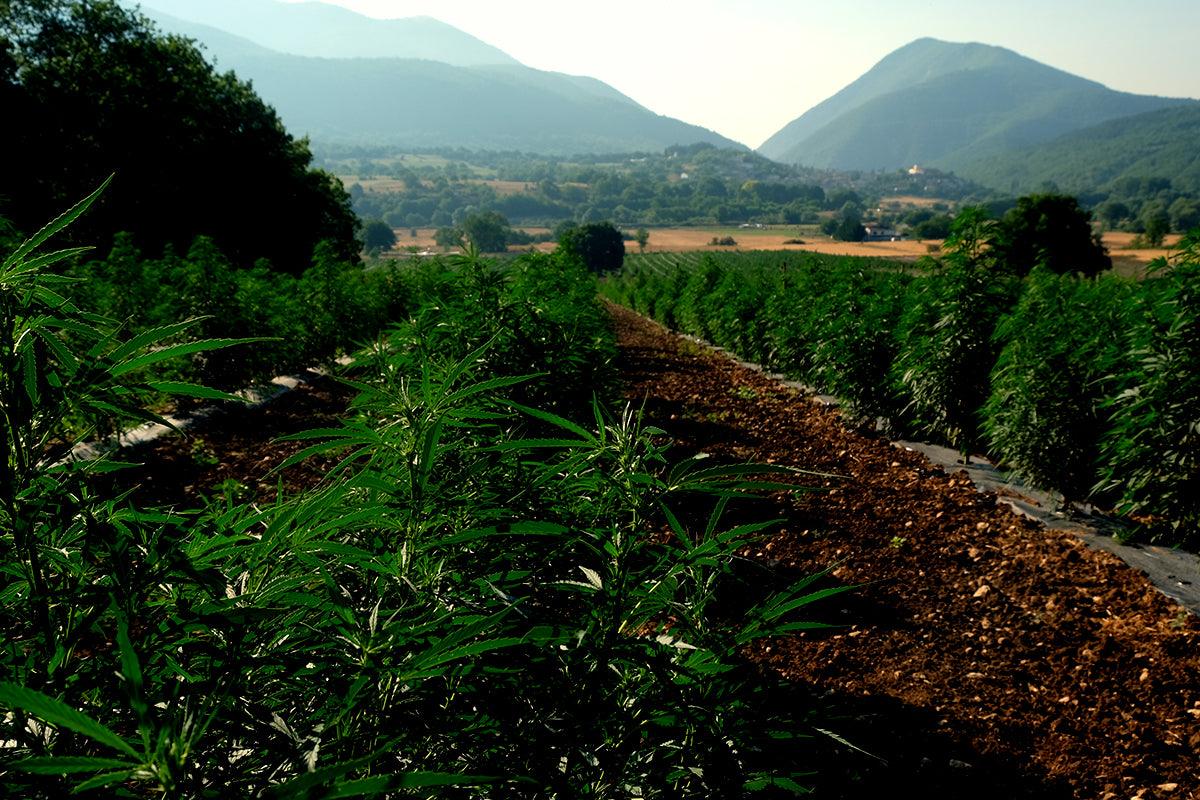After pruning, every cannabis grower's favorite moment begins: the curing and drying phase. The mature herb is removed, the inflorescences are separated from the branches and the path that will make your herb into excellent quality marijuana begins. The drying moment is very delicate to make the most of: fresh buds are very vulnerable, they contain resin and a lot of water and this can make them mold easily, frustrating the efforts of months and months.
Pruning, however, is a rough process and in the end, when you have separated the inflorescences from the rest of the plant matter, you will find yourself with a large amount of marijuana waste, especially branches and leaves. We already know that nothing about cannabis is thrown away (a bit like pork) and that every part of this miracle plant can be reused and reinvented. This obviously also happens for pruning waste.
Furthermore, as soon as they are separated, branches and leaves are loaded with resin and active ingredients. Throwing away this plant waste from the marijuana plant, which for the novice grower is just a residue to be eliminated, can be very short-sighted. They certainly won't be as powerful as flowers, but branches and leaves give rise to great potential that it would be a shame not to exploit.
Cannabutter: a great idea to not waste THC
Edibles , i.e. edible cannabis-based products, are the last frontier in the consumption of cannabinoids for recreational purposes . But how is it done? To prepare a perfect space cake you need to start with cannabis butter. In fact, the herb is not water-soluble, it does not dissolve in water, therefore - in order to use it in the preparation of gastronomic products - it must be treated in the right way. The best way is to prepare marijuana butter, or cannabutter: knowing how to make it will ensure the success of the undertaking, offering you a powerful and unexpected high and an excellent final product.
Obviously you can prepare your butter starting from the buds, but - unless you have a very large quantity of inflorescences - we recommend using pruning waste and optimizing resources. The leaves, in particular, have a high cannabinoid content, much higher than that present in stems or branches, thanks to a higher concentration of trichomes . Using a mix of leaves, stems and branches absolutely won't make you regret not using the best buds to make the butter.
Cannabis-infused ointments and body creams
Cannabis is also absorbed through the skin and, when it comes into contact with the skin, it activates a series of beneficial processes that can make it the future of many cosmetic products. Cannabis has been found to be able to take care of the skin, especially when it comes to conditions like acne, because it helps rebalance excess sebum and does so without drying out the skin.
Trim is the perfect ingredient to create a customized leather conditioner. After decarboxylation and fine grinding of the plant material, it must be mixed together with the other ingredients for 2-4 days. Obviously the ointment will not have a smell, but this problem can be solved by adding essential oils such as lavender or sandalwood, which are also useful for relieving stress.
Hashish and extracts
High quality hashish and cannabinoid concentrates can be obtained from the remains of cannabis pruning. To do this, you need to separate the buds from the plant material, so that only the aromatic particles of cannabis bind together and create a powerful smoke.
In North African countries - such as Morocco or Egypt - mature plants are cut and harvested; subsequently, in a closed room or inside plastic bags, the plants are shaken and beaten to collect the resin, the pistils of the female flowers and small pieces of the plant. This powder is then partly pressed and worked by hand to form an excellent quality block with an intense green colour. From subsequent beatings a new powder will be obtained to be pressed by machine for the production of commercial hashish. To obtain a smoke worthy of the best producers in North Africa, simply collect your trim and place it on a sieve placed on a piece of baking paper or wax paper. You then need to move the sieve so that the trichomes detach from the plant material and then collect them using a scraper.
You can also try making charas , the simplest method is to carefully run your fingers along all the branches and stems of the Cannabis plants, following all the curves and depressions. Charas is Indian-made smoke , made according to the traditional Asian technique . It is produced by collecting the resin of Cannabis plants, whose still fresh inflorescences are rubbed on the hands . The resin that sticks to the skin is then removed with a scraper and blended into small balls. You will have to do exactly the same thing: rub your fingers together until small dark balls form.
Solvent-based extracts are much more complicated to produce and contain very potent concentrations of psychoactive cannabinoids. To make the extracts you need to use special materials and be very careful, as they require the use of potentially very dangerous gases and solvents. With this process, the cannabinoids dissolve in a liquid solvent which, once eliminated, will give way to a very pure cannabis concentrate.
Cannabis-based teas and infusions
With a handful of branches and leaves, some resin residue and a little time available, you can make excellent cannabis infusions . Before proceeding, evaluate whether it is worth decarboxylating the material available.
How you do it? Pour approximately 450ml of water or milk into a saucepan. Cut the branches, add them to the liquid and heat over a low heat, stirring constantly. Leave to cook for 7/8 minutes, so as to lightly consume the liquid part. Remove the branches and keep the saucepan over a low heat. The flavor may not be the best, so it is recommended to add other teas, herbs or sweeteners to improve the flavor.






